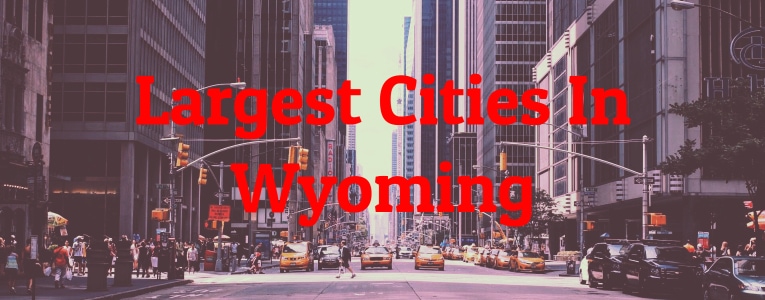Wyoming is a western state situated in the United States. Due to its expansive landscapes and difficult terrain, Wyoming is home to some of the country’s most renowned natural features, including the Grand Teton and Yellowstone national parks.
Mining, oil and gas production, and agriculture all play key roles in the state’s economy, which is heavily built on natural resources. Wyoming is also a significant coal producer, and the state’s mining sector dates back to the nineteenth century.
Wyoming is a state with a rich history and cultural legacy that is surrounded by some of the country’s most magnificent and breathtaking natural environments. Wyoming offers plenty to everyone, whether they’re interested in outdoor activities, history, or the arts.
The state has a varied population, with individuals from all origins and cultures joining together to form a distinct and lively community. Take a short read at our article listing Wyoming’s 8 largest cities (by population).
-
Evanston
Population Density: 1,124 per square mile
Total Area: 10.29 square miles
Year Established: 1869
 Source: Wikimedia
Source: Wikimedia
Evanston lies in northern Wyoming’s Bear River Valley. As of the 2020 Census, Uinta County’s seat has 12,359 residents.
Evanston began as a transcontinental railroad halt in the late 1850s. Union Pacific Railroad surveyor James E. Evans gave the city its name. Coal extraction and agriculture built the city swiftly.
Evanston is a dynamic neighborhood with many advantages. The National Register-listed Uinta County Courthouse is one of several historic structures downtown. The Bear River State Park includes fishing, hiking, and camping.
Did You Know?
The Bear River Valley Festival celebrates Evanston’s history and culture. The event has a procession, live music, food, and craft exhibitors.
-
Green River
Population Density: 848 per square mile
Total Area: 13.70 square miles
Year Established: 1867
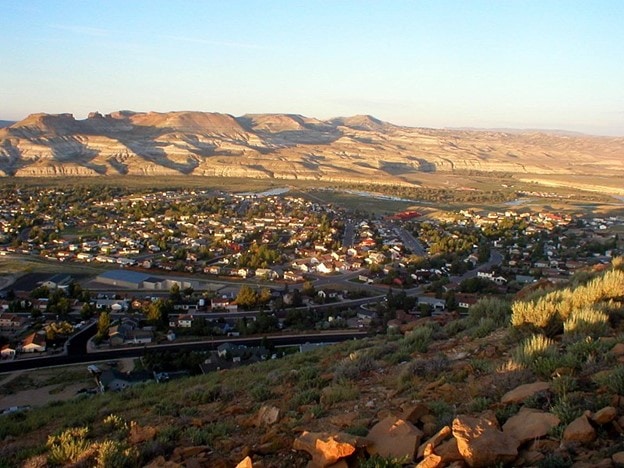 Source: Wikimedia
Source: Wikimedia
The southern Wyoming town of Green River is tiny. Green River is a famous Wyoming destination for travelers seeking scenic beauty and outdoor activities. The city lies on the Green River, a significant Colorado River tributary. Visitors may fish along the river to enjoy the landscape.
The town has a rich history and natural beauty. The settlement was built in the late 1800s to serve Union Pacific Railroad passengers moving west. The Sweetwater County Historical Museum has displays on early settlers, Native Americans, and the Union Pacific Railroad.
Green River, Wyoming, is an excellent place to see Western nature. The city has great beauty, outdoor leisure, and historical history. Green River is an excellent spot to fish, walk, or learn about the city’s history.
Did You Know?
Green River’s downtown has several stores, restaurants, and pubs. Local stores provide unique goods and souvenirs, while the city’s restaurants serve informal and gourmet dining.
-
Sheridan
Population Density: 19,124 per square mile
Total Area: 12.68 square miles
Year Established: 1860s
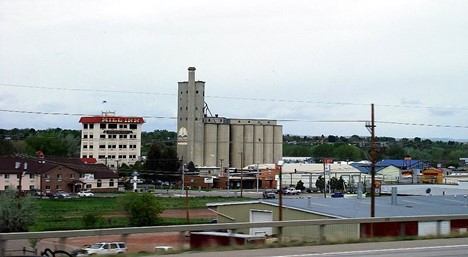 Source: Wikimedia
Source: Wikimedia
Sheridan, a tiny city in the Bighorn Mountains’ foothills, is in northeastern Wyoming. The city, founded in 1882, attracts tourists from across the globe with its rich history and lively culture.
This town has a lively cultural culture and outdoor activities. The WYO Theater, one of many in the city, presents musicals, plays, and concerts. The city’s art galleries and studios feature local and regional artists.
Sheridan has something for everyone. For a true western experience, visit it for its rich history, stunning landscape, and varied culture. Sheridan offers something for everyone: hiking, history, and nightlife.
Did You Know?
Sheridan County Museum, which preserves local history and culture, is another popular site. The museum covers the city’s foundation, economics, and the railroad’s significance. Visitors may also learn about Native American history and the oil and gas industry’s influence.
-
Rock Springs
Population Density: 1,222 per square mile
Total Area: 19.38 square miles
Year Established: 1888
 Source: Wikimedia
Source: Wikimedia
Rock Springs is a western Wyoming town. Sweetwater County’s main city has 23,000 residents. History, outdoor leisure, and community spirit define the city.
Rock Springs is notable for outdoor leisure and mining. The community is near numerous national parks and monuments, including Flaming Gorge National Recreation Area, famous for its red rock formations for fishing, boating, and hiking.
The place has a solid community. The Sweetwater County Fair and Rock Springs International Days are among the city’s many annual events. Theater, dance, and music ensembles thrive throughout the city.
Rock Springs is a unique and dynamic city with a rich history, gorgeous natural surroundings, and a strong community. Rock Springs offers outdoor leisure, mining, and arts & culture.
Did You Know?
Rock Springs’ coal mining history is important. Since its founding in the late 1800s, coal mining has been the city’s main industry. Today, numerous big mining businesses operate in the city, providing employment and economic activity.
-
Laramie
Population Density: 1,723 per square mile
Total Area: 18.33 square miles
Year Established: 1820s
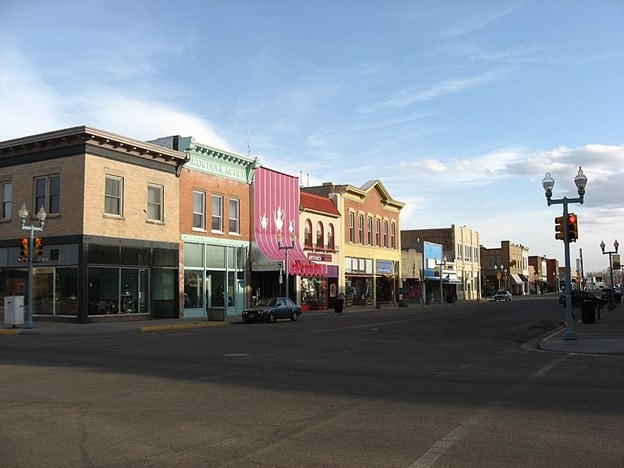 Source: Wikimedia
Source: Wikimedia
The Snowy Range Mountains surround Laramie, Wyoming, towards the southeast. The county capital and biggest city in Albany County, it has 31,000 residents.
The Union Pacific Railroad developed the city in the mid-19th century. Trade and commerce flourished rapidly throughout the city. Laramie’s economic and cultural center is the University of Wyoming, founded in the late 1800s.
The lone four-year university in Wyoming, the University of Wyoming, is in the city. The institution provides undergraduate and graduate degree programs and research in energy, environment, and health sciences.
Live, work, and play in Laramie. Its natural beauty, thriving arts and cultural scene, and great educational and research possibilities provide something for everyone.
Did You Know?
Laramie’s arts and entertainment environment complement its outdoor activities. The university’s Buchanan Center for the Performing Arts holds plays, concerts, and dance events. The Laramie Plains Museum chronicles the city’s history and Native American traditions.
-
Gillette
Population Density: 1,510 per square mile
Total Area: 22.99 square miles
Year Established: 1891
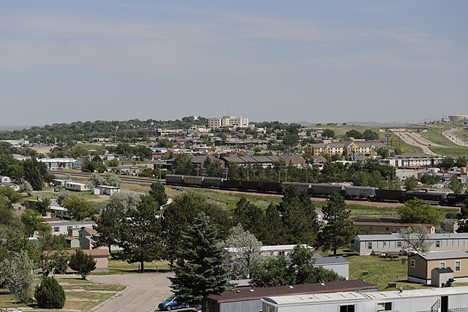 Source: Wikimedia
Source: Wikimedia
Gillette is in northern Wyoming. It is the Campbell County seat and the self-proclaimed “Energy Capital of the Nation” owing to its coal, oil, and natural gas deposits. The railroad town became a mining and agricultural hub after its 1891 founding. It has 32,000 residents.
Gillette has outdoor recreation and energy industry. Hunting, fishing, and camping are popular in the city’s highlands and woodlands. Thunder Basin National Grassland, Black Hills National Forest, and other state parks and national forests are nearby.
Gillette is a thriving community with a solid economy, gorgeous natural surroundings, and many recreational and educational options. It remains a terrific area to live, work, and raise a family.
Did You Know?
Edward Gillette, who served as a surveyor for the Chicago, Burlington, and Quincy Railroad, is honored with the naming of the city that bears his name.
-
Casper
Population Density: 2,268 per square mile
Total Area: 26.52 square miles
Year Established: 1840s
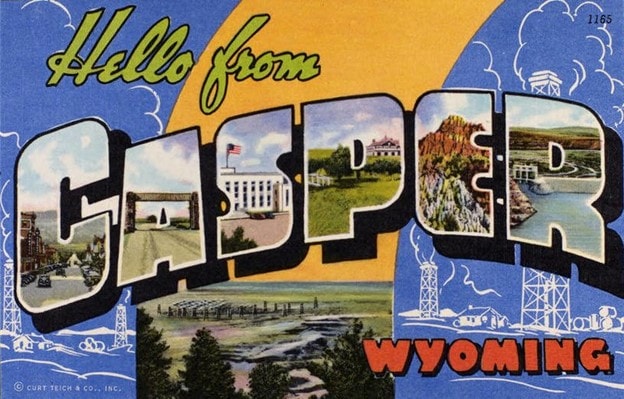 Source: Wikimedia
Source: Wikimedia
Wyoming’s Casper is a thriving metropolis. Casper, Wyoming’s second-largest city with 60,000 residents, is noted for its rich history, outdoor activities, and welcoming community.
Casper’s history is significant. The community was named after Fort Caspar, established in 1859 to protect Oregon Trail travelers and created in 1888 during the Wyoming oil boom. The Fort Caspar Museum displays fort ruins and city history.
Friendly people make Casper special. The Central Wyoming Fair and Rodeo, which includes a parade, live music, and other events, brings the city together.
Casper has something for everyone. Casper features history, outdoor activities, and arts and culture. Casper’s friendly people and gorgeous surroundings make it a terrific destination to live, work, and visit.
Did You Know?
Arts and culture thrive in Casper. The Nicolaysen Art Museum and Discovery Center display modern and traditional art, while the Casper Children’s Theatre performs for all ages.
-
Cheyenne
Population Density: 2,080 per square mile
Total Area: 32.14 square miles
Year Established: 1867
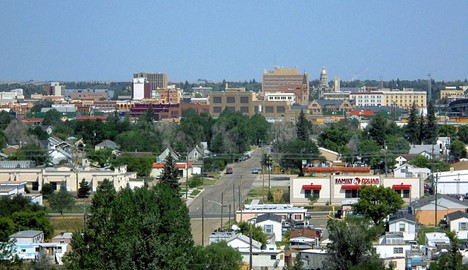 Source: Wikimedia
Source: Wikimedia
Cheyenne is the largest city in Wyoming, with 64,000 residents. The city is in southeast Wyoming between Nebraska and Colorado. The Union Pacific Railroad built Cheyenne in 1867. Trade, transportation, and government flourished rapidly in the metropolis.
A solid economy, cheap living, and good quality of life make Cheyenne a fantastic location. Healthcare, education, and government provide numerous jobs in the city’s varied economy.
Cheyenne, Wyoming, is fantastic to live, work, and visit. Its rich history, Western tradition, and great quality of living make it a distinctive and desirable American West destination.
Did You Know?
The world’s biggest outdoor rodeo, Cheyenne Frontier Days, celebrates the city’s Western history and culture. Rodeos, concerts, parades, and more draw thousands of tourists to the event.
RELATED READINGS
10 Largest Cities In North America By Population
10 Largest Cities In Ohio By Population
10 Largest Cities In Indiana By Population
10 Largest Cities In Illinois By Population
10 Largest Cities In Florida By Population
